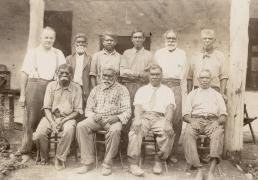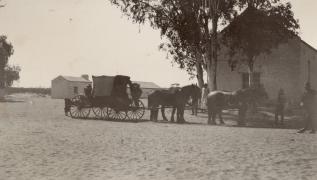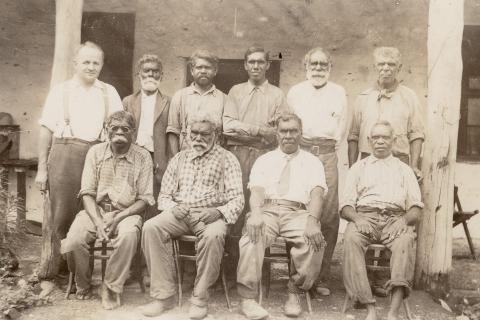Carl Strehlow’s friend and colleague Pastor Stolz arrived at Hermannsburg with a vehicle after Carl and his family had already departed, he followed on to Horsehoe Bend station but arrived just in time for his death on the 20th October 1922. Strehlow is reported to have asked Stolz to oversee the care of Hermannsburg. After Carl Strehlow’s death, the Chairman of the Mission Board, Pastor Stolz reviewed the mission and indicated a three-point plan for its future.
- The training of native evangelists to go out into tribal lands
- Aboriginal work-based training in areas like cattle work, blacksmiths, masonry, woodwork, sewing etc.,
- Development of the mission reserve as profitable cattle run.
The mission was left for some time without an ordained missionary. Mr. Heinrich, the teacher, took on the oversight of the mission. He was assisted by two other non-Aboriginal men: Mr. Klenig the manager and Mr. Paeschke the stockman.
The work of the mission was advanced during this period by the Aboriginal evangelists Moses, Abel August, Martin, Rufus, Hezekial and Nathaneal with visiting pastors from the south occasionally visiting and conducting baptisms confirmation and communion services 1. Moses Tjalkabota was the first Arrarnta evangelist and in 1923 he travelled to Alice Springs to talk to a group of Aboriginal people who gathered to hear him speak. He took several more similar trips the following year. Moses, Rufus and Hezekiel were the regular lay preachers at Hermannsburg church. Abel, August, Martin and Nathanael also took services.
On 4 November 1923, one year after Carl Strehlow’s death a group of 26 adults and 14 children were baptised at Hermannsburg thanks in a large part to the ongoing work of Moses.
The move to a more commercial focus for the mission also brought practical economic changes. The manager organised workers to be paid a wage and they were expected to support their families. However, this did not work in situations with large extended families and many people struggled to make ends meet and this practice was later reversed by F.W Albrecht.
- Albrecht, P 2002 From Mission to Church 1877-2002: Finke River Mission. Pub Finke River Mission p9.
Media






